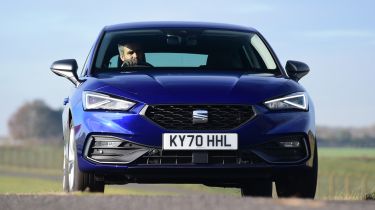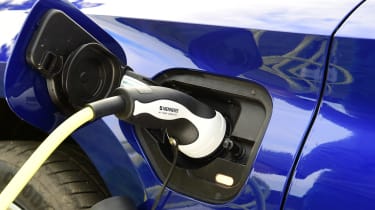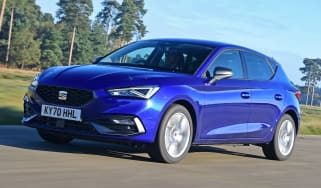SEAT Leon review - MPG, running costs & CO2
While there was lots of choice for SEAT Leon buyers before, the range has been slimmed down since
One way in which the Leon became more sophisticated for this generation was the wider range of powertrains available, but SEAT slimmed down the engine lineup in 2024, so your choice is now between a 1.5-litre engine with petrol, mild-hybrid or plug-in hybrid tech, plus a 2.0-litre diesel.
Petrol models will be better suited for short, urban trips – mild-hybrid assistance is only fitted to the automatic models and gives a negligible improvement to mpg and emissions, so if you don’t need an automatic, we’d stick to a six-speed manual given its lower price across the board. Diesel will work best for drivers with a higher annual mileage who spend lots of time on the motorway.
SEAT Leon MPG & CO2
The entry-level 113bhp 1.5-litre TSI petrol is capable of up to over 50mpg. Meanwhile, the 2.0-litre diesel engine gets official fuel economy of just over 62mpg in 113bhp guise, or 59mpg in 148bhp guise.
The 1.5-litre petrol is available with 'eTSI' 48-volt mild-hybrid technology, but only in combination with a DSG automatic gearbox. This will harvest energy under deceleration and store it in a small battery, ready to power the car during engine-off coasting and provide a small boost under acceleration – these cars actually offer just a small improvement to efficiency at up to 53.5mpg but cost around £3,000, so will appeal solely if you really want that automatic transmission.
More reviews
A higher-powered 148bhp version of the 1.5-litre petrol is also available – the manual version returns up to just over 49mpg while the mild-hybrid automatic returns up to around 52mpg so there’s not too much of a tradeoff in efficiency for power.
The mild-hybrid assisted petrol engines shouldn’t be confused with the plug-in hybrid, badged eHybrid. This version gets an extremely lofty on-paper figure of up to 784.4mpg, but take this with a pinch of salt, because you won’t come anywhere close to that figure unless you keep it consistently charged up via a home wallbox charger. Do that, and you can travel for up to 82 miles on a charge or the electric battery, according to SEAT, helping contribute to that figure. A closer look at the fuel efficiency shows that you’re more likely to get around 55mpg in the real world, but again this depends on your usage – run on electric power more often and this can dramatically increase your mpg figure.
CO2 emissions are low at just 9g/km, which is good for company-car buyers because it keeps BiK (Benefit-in-Kind) tax rates low.
Insurance groups
Insurance groups span from Group 14 for base SE specification cars, to Group 19 for top-spec FR Sport models out of 50 groups, while the plug-in hybrid eHybrid version sits in group 24. This means most versions of the Leon shouldn’t cost too much to insure. It’s about the same cost to insure the Volkswagen Golf, which spans groups 14 to 23, and insuring a Ford Focus should cost about the same, as you’ll find it in groups 13 to 17 (excluding the hot Focus ST in group 27, of course).
Warranty
SEAT typically offers a three-year/60,000-mile warranty with its cars, which matches Volkswagen and Ford, but falls short of quite a few rivals. For instance, the Toyota Corolla and Hyundai i30 both come with a five-year/100,000-mile warranty, and the Kia Ceed gets seven years of cover.
Servicing
SEAT servicing can be paid for monthly to help spread the costs of maintenance, and usually buyers are offered different servicing packages depending on their annual mileage and driving habits.











